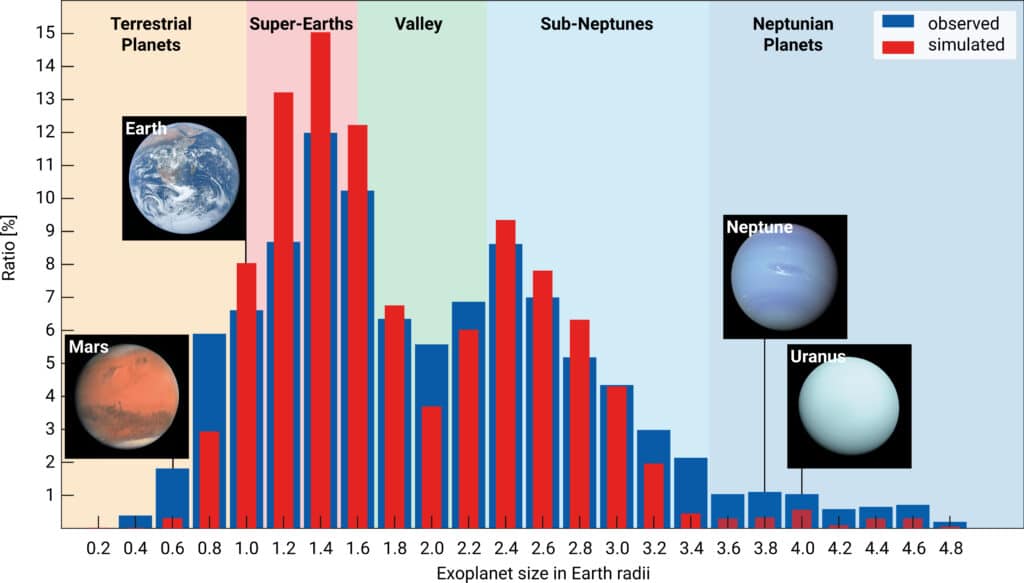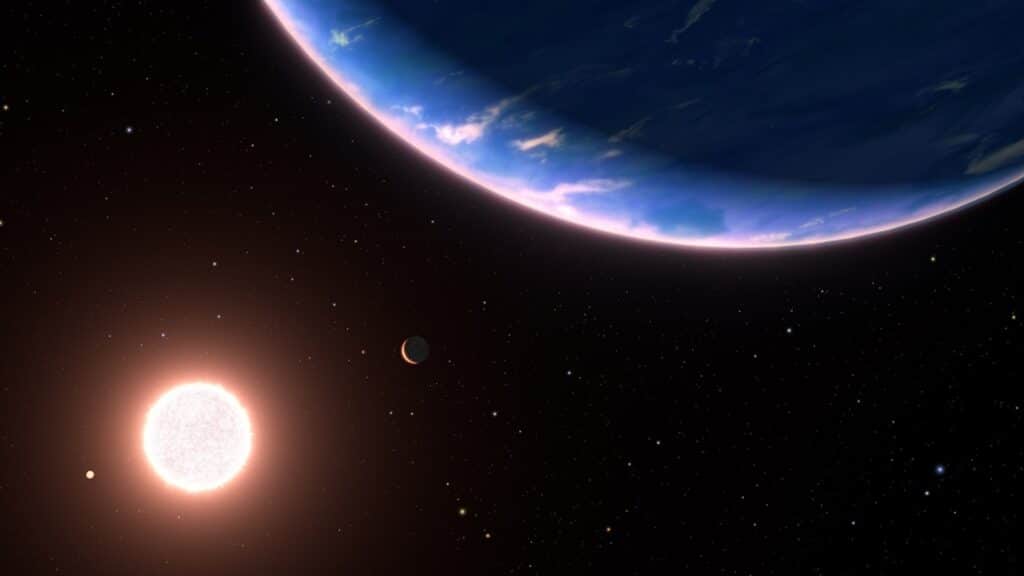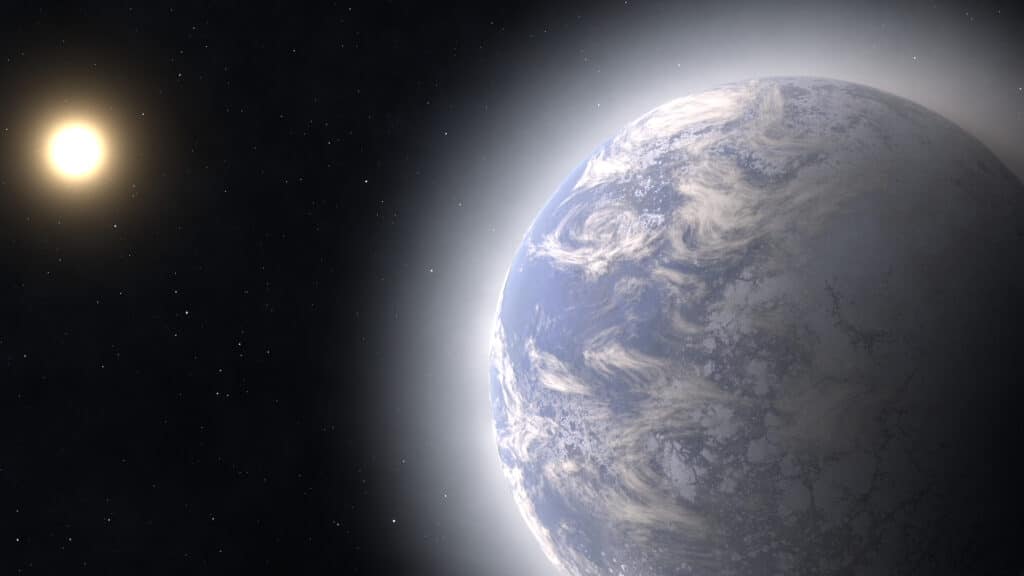For years, astronomers have noticed a strange gap in the range of sizes of exoplanets — planets orbiting stars other than our Sun. Specifically, there is a shortage of exoplanets about twice as large as Earth. New research suggests that the migration of icy exoplanets inward during the early years of planetary systems is likely responsible for this gap.
Exoplanets come in a wide range of sizes, from small rocky planets like Earth to gas giants bigger than Jupiter. But right in the middle is a conspicuous gap. “Six years ago, a reanalysis of data from the Kepler space telescope revealed a shortage of exoplanets with sizes around two Earth radii,” explains Remo Burn, an exoplanet researcher at the Max Planck Institute for Astronomy in Germany and lead author of the new study, in a media release.
This gap in the size distribution of exoplanets has puzzled astronomers. But Burn and his colleagues predicted such a gap years earlier. “In fact, we – like other research groups – predicted based on our calculations, even before this observation, that such a gap must exist,” says co-author Christoph Mordasini from the University of Bern in Switzerland. Their prediction stemmed from models tracing the formation and evolution of planetary systems over time.
On one side of the gap are rocky super-Earths slightly bigger than our home planet. On the other side are sub-Neptunes, mysterious worlds up to about 2.7 times Earth’s size with puffy atmospheres rich in lighter gases like hydrogen and helium. “However, we do not have this class of exoplanets in the Solar System,” notes Burn. “That’s why, even today, we’re not exactly sure about their structure and composition.”
The atmospheres of close-in exoplanets are often stripped away by intense radiation from their stars, which could help explain the gap. But Burn points out that previous explanations neglected the role of planetary migration — the drifting of developing planets inward or outward during formation. New simulations show that migration likely contributes significantly to the origins of the radius gap.
Origin of the Enigmatic Sub-Neptunes
The story begins far from the exoplanet’s star, where icy building blocks called planetesimals clump together to form new worlds. In these cold outer regions of planetary systems, sub-Neptunes are born with extensive atmospheres compressed by low temperatures and pressures.
“Based on simulations we already published in 2020, the latest results indicate and confirm that instead, the evolution of sub-Neptunes after their birth significantly contributes to the observed radius valley,” says Julia Venturini of the University of Geneva, who led the earlier research.
As the icy sub-Neptunes migrate closer to their stars, temperatures and pressures rise. Icy materials in the planets melt and vaporize, forming thick atmospheres dominated by water vapor. These growing atmospheres cause the apparent sizes of the planets to increase. “After all, the observations employed to measure planetary radii cannot differentiate whether the determined size is due to the solid part of the planet alone or an additional dense atmosphere,” Burn explains.
Meanwhile, the intense radiation from the star strips lighter gases from closer-in rocky planets. These worlds seem to shrink as they lose their atmospheres. The combined outward growth of sub-Neptunes and inward shrinkage of super-Earths sculpts the radius gap seen in exoplanet surveys.

Key Role of Water Physics
“Central to this study were the properties of water at pressures and temperatures occurring inside planets and their atmospheres,” Burn notes. Realistic modeling of sub-Neptunes hinged on accurate water physics over a wide range of conditions.
“It’s remarkable how, as in this case, physical properties on molecular levels influence large-scale astronomical processes such as the formation of planetary atmospheres,” remarks Thomas Henning, director at the Max Planck Institute.
The new models trace the behavior of ices, rock, and gases from the microscopic to planetary scales to provide a coherent picture of radius gap formation. And while some details remain inconsistent, such as too many icy planets ending up too close to their stars, astronomers see these as opportunities to learn more. Observations by future instruments like the James Webb Space Telescope could provide additional tests by revealing the compositions of exoplanets across the gap.

Hints of Distant Oceans
The theory also hints tantalizingly at truly alien worlds lurking out there. “If we were to expand our results to cooler regions, where water is liquid, this might suggest the existence of water worlds with deep oceans,” says Mordasini. On such aquatic planets simmering far from their stars, life could perhaps have gained a foothold.
So the radius gap, while still not fully explained, is shedding light on the origin and nature of exoplanets — including some that may not be too different from our own watery world. As astronomers expand the galactic map of planetary systems, gaps and anomalies guide the way to deeper understanding. Each strange quirk and surprising pattern, like the shortage of planets around two Earth radii across, reveals deeper truths about the richness of worlds beyond the Sun.
The study is published in Nature Astronomy.












